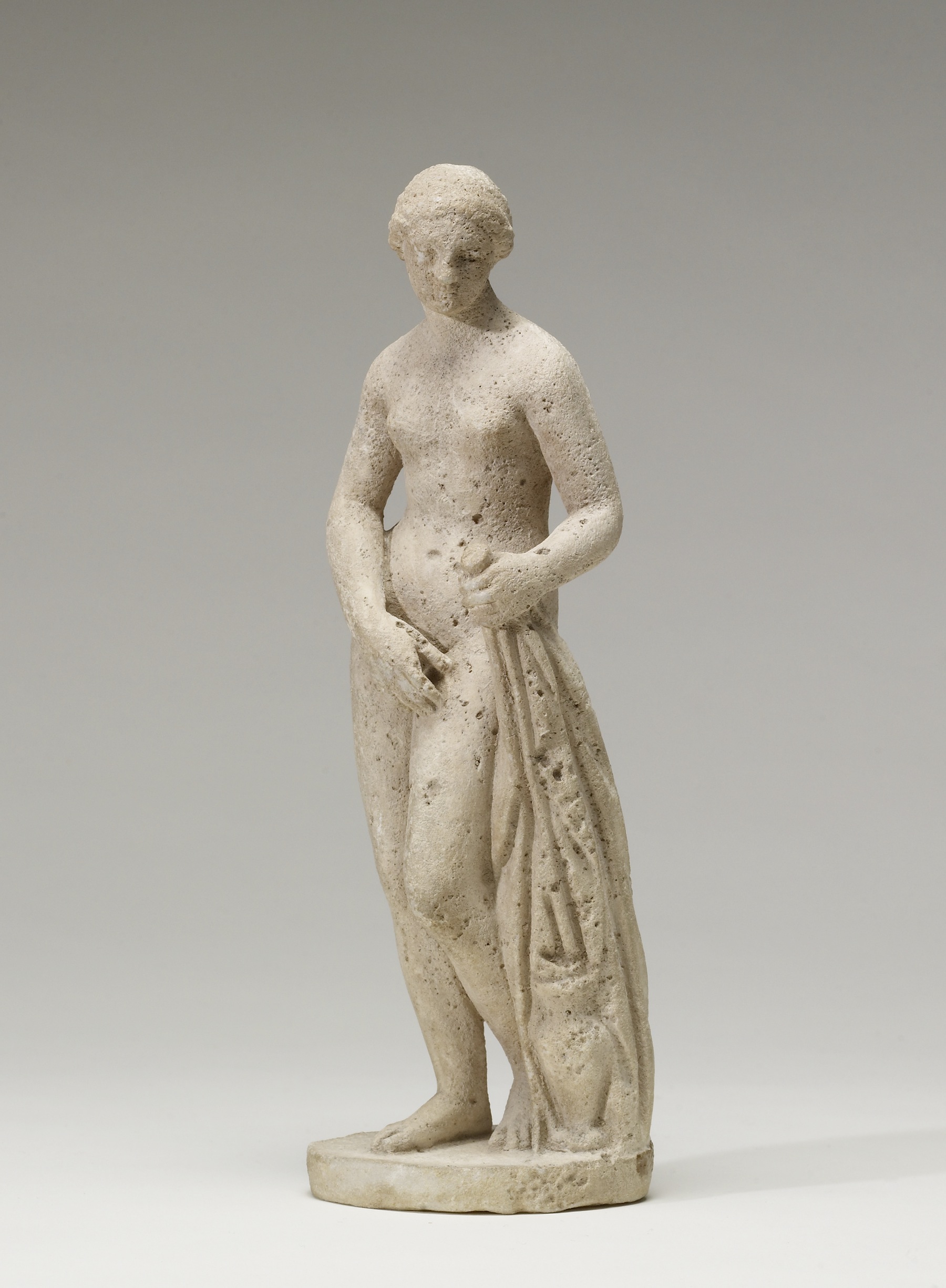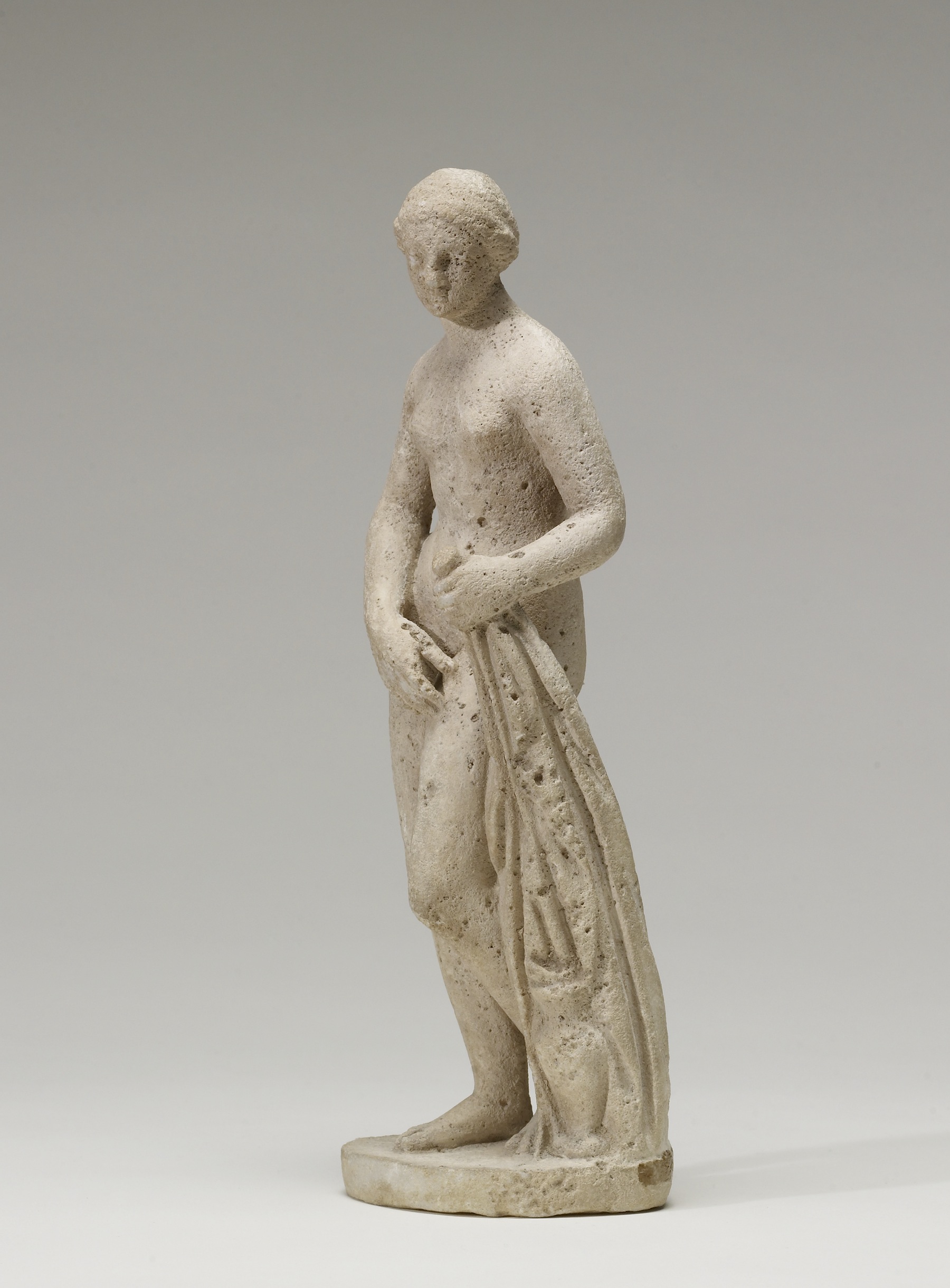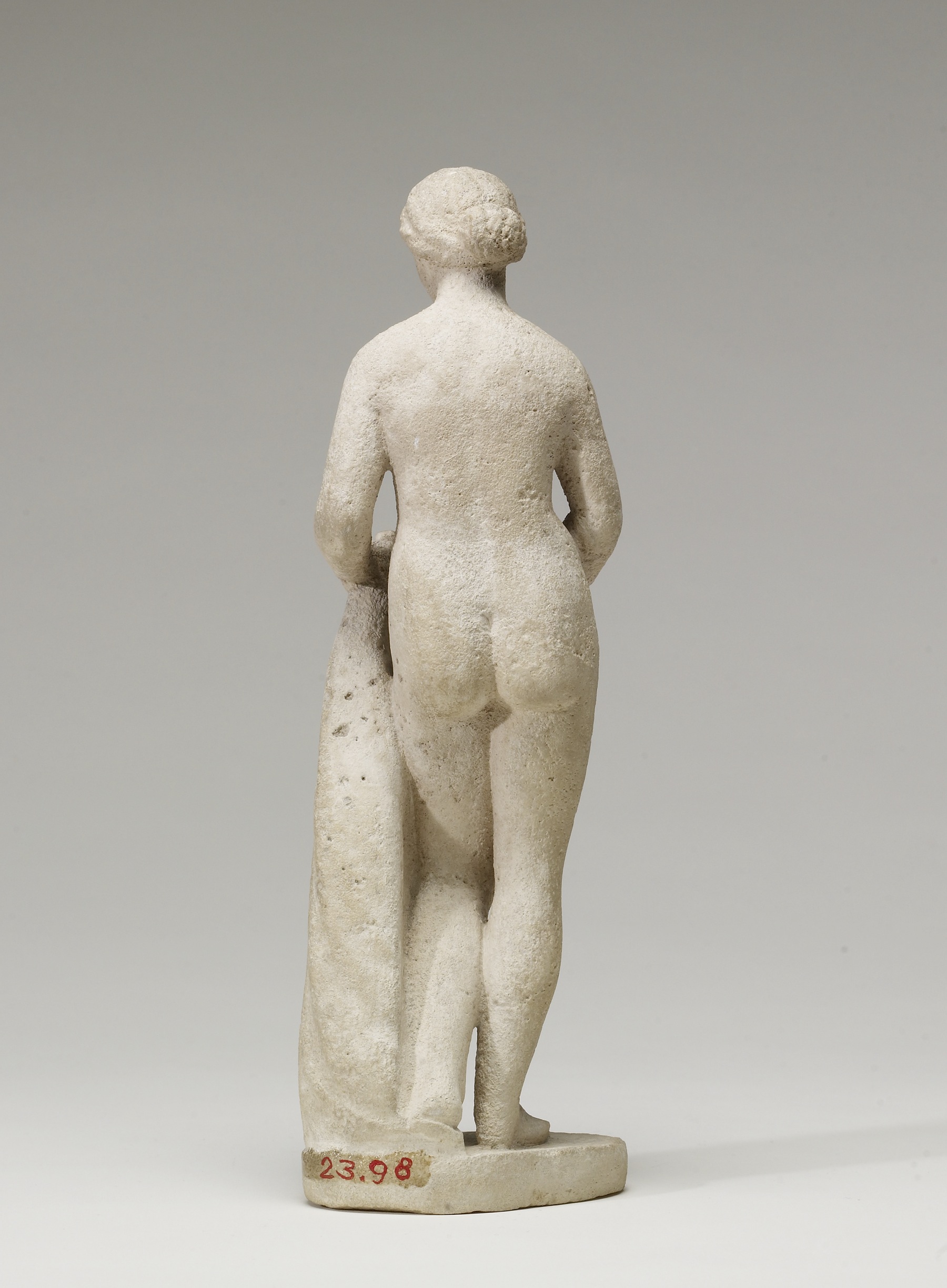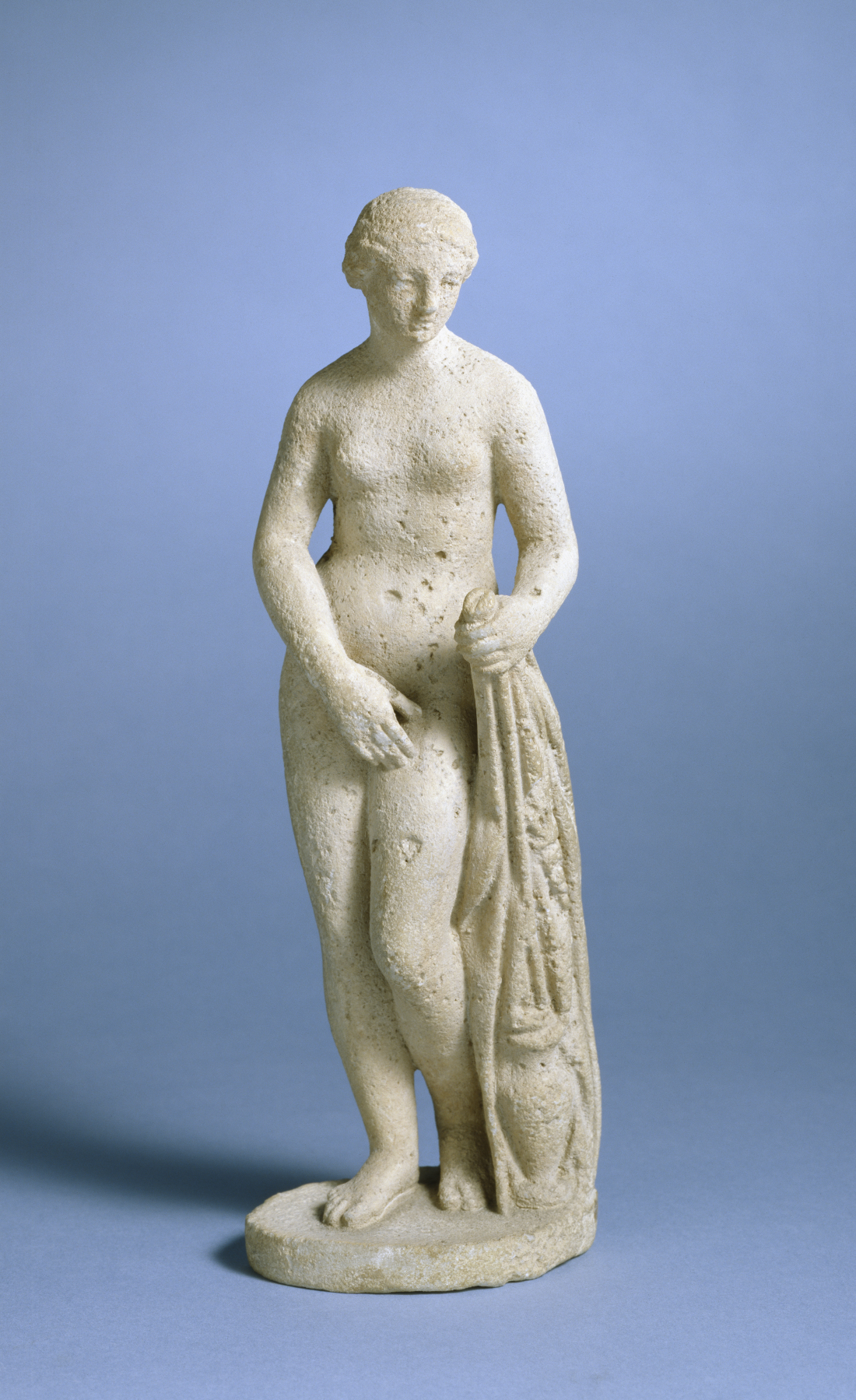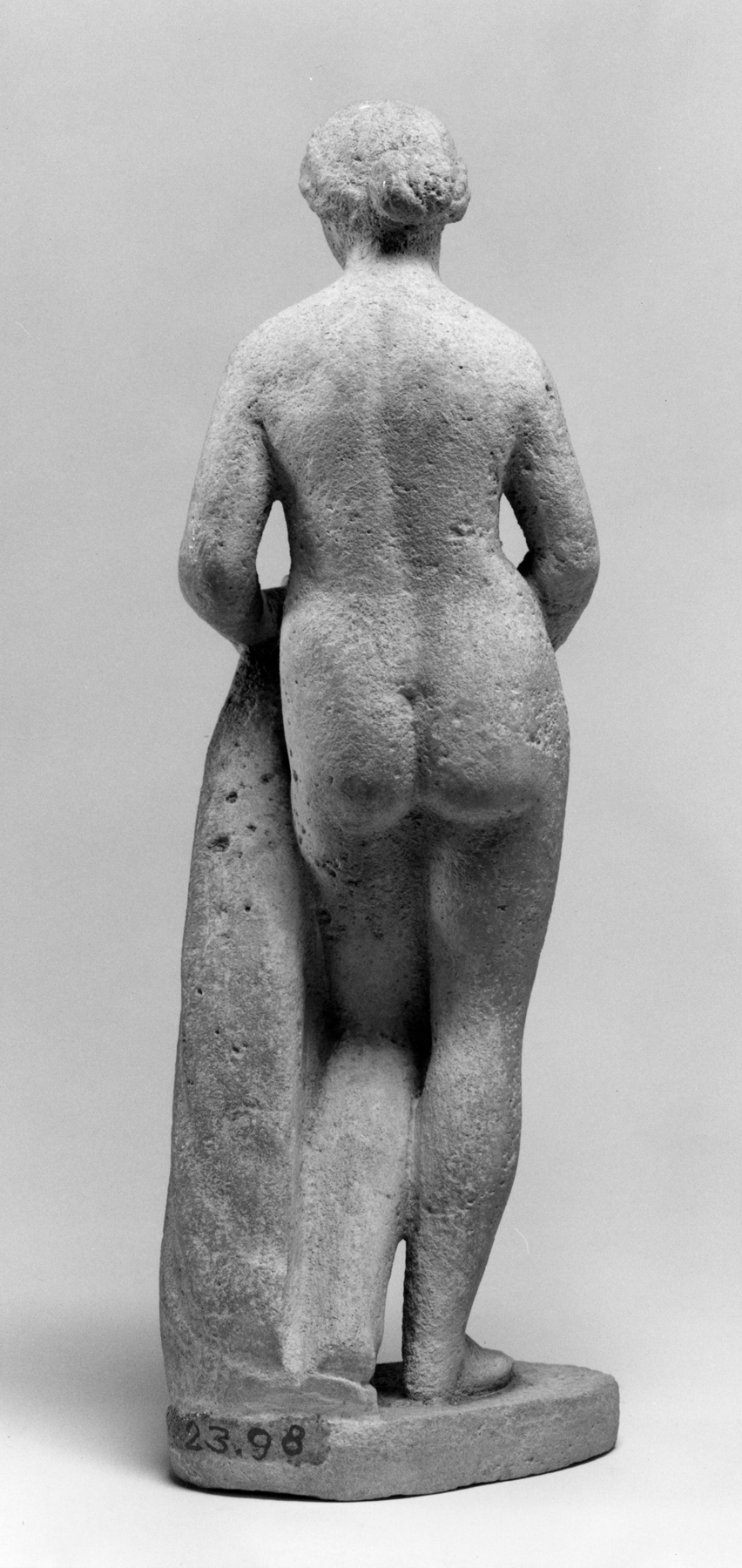Copy of the Aphrodite of Knidos
Most Hellenistic representations of Aphrodite were inspired by the Aphrodite of Cnidus, a statue made by Praxiteles in about 364 BC, of which this is a copy. The original was made for the island of Cos, which had commissioned the artist for a statue of the goddess. Because the statue showed Aphrodite in the nude, it was rejected by the city in favor of a more traditional, draped image that has not survived. Praxiteles' statue of the nude Aphrodite, subsequently acquired by the city of Cnidus, became one of the most famous sculptures in antiquity.
The goddess modestly covers her body with her hand. The sensuality of the image is characteristically Hellenistic. Noteworthy, too, is the unaccustomed sense of intimacy with an Olympian deity.
Provenance
Provenance (from the French provenir, 'to come from/forth') is the chronology of the ownership, custody, or location of a historical object. Learn more about provenance at the Walters.
Mrs. Wood, Brooklyn, New York, [date and mode of acquisition unknown]; Henry Walters, Baltimore [date and mode of acquisition unknown]; Walters Art Museum, 1931, by bequest.
Exhibitions
| 1988-1989 | From Alexander to Cleopatra: Greek Art of the Hellenistic Age. The Walters Art Gallery, Baltimore. |
Conservation
| Date | Description | Narrative |
|---|---|---|
| 8/12/1988 | Treatment | cleaned; other |
Measurements
9 5/8 x 3 1/16 x 2 11/16 in. (24.5 x 7.8 x 6.9 cm)
Credit Line
Acquired by Henry Walters
Location in Museum
Accession Number
In libraries, galleries, museums, and archives, an accession number is a unique identifier assigned to each object in the collection.
In libraries, galleries, museums, and archives, an accession number is a unique identifier assigned to each object in the collection.
23.98

